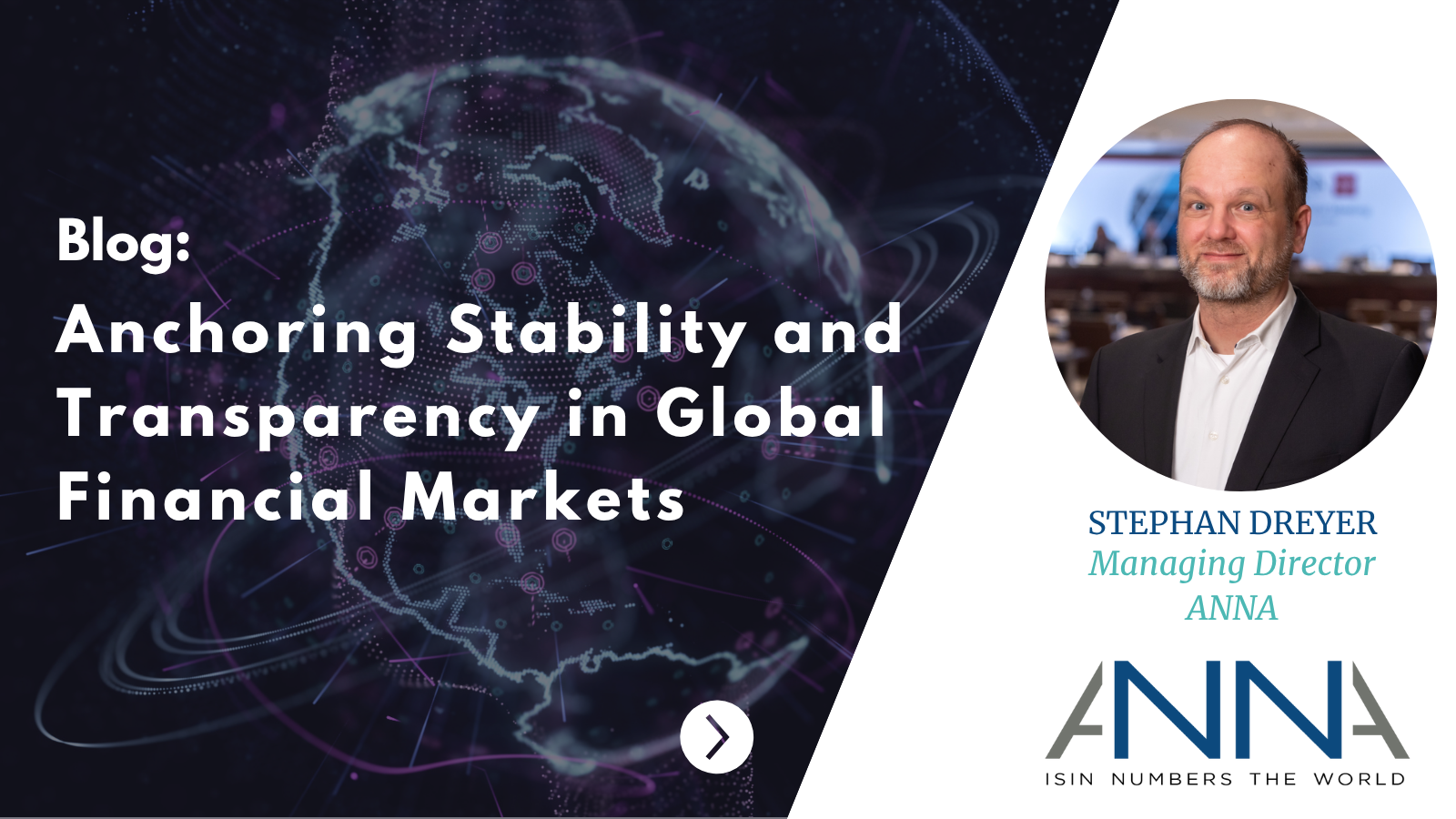First published on TabbFORUM, 25 June 2025. A universal language Consensus-based financial standards developed by…
Industry steams ahead on Benchmarks work
Earlier in the year, ANNA held its first Benchmarks Task Force (TF21) meeting at the London Stock Exchange, the outcome of which was shared in a blog post published in April 2019. Since then, TF21 has met twice to follow-up on the actions from the previous meeting which included a review of proposed amendments to the ISIN Guidelines based on TF21 recommendations, as well as opening discussions on ISIN data quality and coverage.
ISIN Guidelines Amendments
The latest TF21 meeting was on 13th November 2019. The purpose of this meeting was to follow up on the recommendations to amend the ISIN Guidelines, which had been put forward earlier in June. All recommendations were subsequently approved at this latest meeting.
The approved recommendations include:
- Benchmark Administrators to be the eligible requestor for ISIN assignment/requests. The exception being where a Benchmark Administrator does not want to be involved or has transferred this obligation to the calculating agent.
- The definition of Benchmark Administrator, from IOSCO Principles, to be inserted in the ISIN Guidelines.
- Benchmark Administrators name be used as the issuer name unless an alternative is specified by the BA. The BA must include a rationale for use of an alternative issuer name.
- Attribute examples to be taken into consideration to ensure unique ISIN identification as well as naming convention guidance so relevant attributes are visible to allow differentiation between indices.
The recommendations were presented to the ANNA membership for approval at the Extraordinary General Meeting on 28-29 November 2019. The new guidance aims to improve the quality and coverage of ISIN data through direct engagement with the authoritative source – the Benchmark Administrators (BAs).
Following approval of version 16 of the ISIN Guidelines, the new version was implemented 1 December 2019. All NNAs have an obligation to adhere to the latest version of the ISIN Guidelines. A key change is where an ISIN request is received by any entity other than the BAs, the NNA will seek to engage the BA in the request process, as per the ISIN Guidelines.
Further Discussion
At the 13th November meeting, an additional discussion was also held on the potential impact to existing ISINs in relation to corporate actions such as a merger, takeover or re-domicile of the BA. Consensus was reached that existing ISINs should remain unchanged to minimise disruption and cater for the principle of persistence.
On the topic of data quality, it was agreed that each Benchmark Administrator plays a crucial role in ascertaining the ISIN and the associated data elements being used by industry for each index. Collaboration with the NNA responsible for ISIN assignment is required to confirm the ISINs and descriptive details are an accurate reflection of the indices. Other areas of discussion were the specificity of the index description and the maximum description length required to satisfy representation of the index name. Whilst the ISIN Guidelines will assist to address these matters going forward, all participants agreed that collaboration between BAs and NNAs is essential for progress to be made in ISIN data quality and coverage. BA’s require the full picture of existing ISIN data to be able to assist with verifying the quality and coverage.
Discussion on ISO 6166 ISIN revision
The recommendations from TF21 were also contributed to the work of the ISO WG responsible for the current ISO revision of the ISIN standard. The proposed amendment, which references BAs, aligns with the recommendations of TF21. The revised standard still needs to go through the ISO final drafting and voting stages and is not expected to be published until late 2020, at the earliest.
ISIN data analysis and coverage
Also at the November meeting, an overview was provided on the latest analysis of ANNA Service Bureau (ASB) ISIN data, highlighting that five jurisdictions comprise the majority (98%) of ISIN index coverage (Switzerland, UK, Germany, USA & China). An increased use of LEI was noted, with an ISIN-LEI linkage existing for 50% of ISINs assigned for indices.
In relation to the EU Benchmark Regulation, there has been an increase in the number of BAs registered on the ESMA Benchmarks Register, although very few contain their list of available benchmarks at this stage. As per the Benchmark Regulation, provision of ISIN is required to identify benchmarks if available, so the expectation is that ISIN will be more visible in the register once BAs start introducing their benchmark lists.
Next steps
It was agreed that a follow-up meeting would be scheduled for January 2020 to discuss ISIN data quality analysis and share any approaches that could be used going forward.
Each BA will also provide an overview of how they uniquely identify an index, including what factors are taken into consideration. BAs and NNAs will collaborate in reviewing the ASB ISIN data, specific to their indices/ISINs, to assist with data quality and coverage analysis.
Given the increased number of BAs who have appeared on the ESMA Benchmark Register, we would be extremely happy for any additional Benchmark Administrators who wish to participate in the Task Force to contact ANNA – secretariat@anna-web.org



